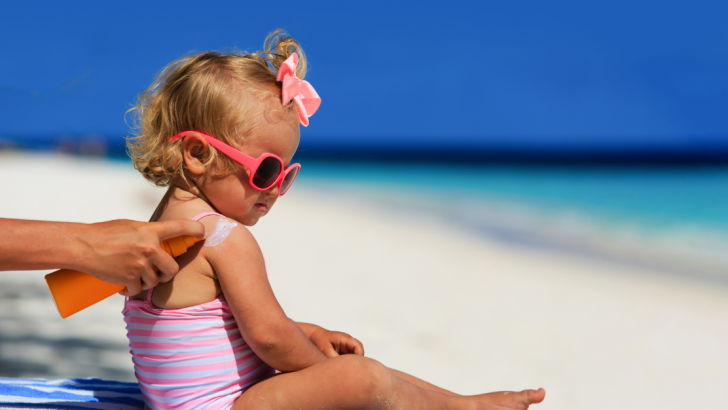Chai Brady discusses six precautions needed for having fun in the sun
Summer is a time many of us take to the outdoors, perhaps a trip abroad or just to a local park, but there are several precautions to take and dangers to keep in mind when deciding to bask in the sun.
Although Ireland is notorious for volatile weather, there can be glorious weeks of sun that entice revellers out for some Vitamin D. Unfortunately for many sun burn strikes quickly after just brief exposure to sun rays, while others may be overconfident in their tanning ability. Skin cancer is also a very real threat, with 11,000 new cases diagnosed in 2015. It is the most common cancer in Ireland. Being prudent in the sun doesn’t have to be difficult and the nasty results of sunburn don’t have to be part of the summer.
Seeking shade
“Spending time in the shade is the most effective obvious thing you can do to avoid being in the sun too long. Good shade can give up to 75% protection from UV rays,” according to the Irish Cancer Society.
The charity says that good shade protects from both direct and indirect UV rays which can come directly from the sun or indirectly scattered by clouds or particles in the atmosphere. They can also reflect from surfaces like snow, sea water and concrete.
These rays can also pass through windows, but as car, home and office windows block certain UV rays it doesn’t pose as much of a threat unless a person spends long periods close to a window. In this case they should use clothes or sunscreen to protect skin.
Sunglasses
Who says you can’t be cool and safe? Proper sunglasses are proven to help protect eyes from being damaged by the sun. In the short term this can lead to irritation, difficulty with bright lights, sunburn on the cornea and excessive blinking.
However, the long term damage can be much more severe, leading to cataracts and even cancer.
The Irish Cancer Society says: “Eye damage from UV rays can start at an early age. For this reason it is a good idea to protect children’s eyes with sunglasses when they are old enough to wear them. Make sure the glasses fit well and that they are not a safety hazard.
“Toy sunglasses do not provide protection from UV rays. If a child refuses to wear sunglasses don’t forget that a broad brimmed hat and shade will also give some protection.”
Outdoor workers
Sun exposure is the best natural source of Vitamin D and is important for good general health. Everyone can enjoy the outdoors but need to think about protecting skin when outside, this is particularly important for outdoor workers who are at higher risk than other workers.
According to the Health and Safety Authority there are several protective measures employers can implement:
If possible, plan outdoor work in sunny weather to limit duration and intensity of employee exposure to direct sunlight (1100 to 1500 sun rays are most intense)
- Limit duration of exposure if possible when UV index is high (three or above), do indoor work if possible. This can be checked at www.cancer.ie/reduce-your-risk/sunsmart/uv-index
- Provide shade if possible
- Give information to employees about dangers of sun exposure
- Inform employees about the Sun Smart code
- Educate and encourage employees to self-check skin for signs of skin cancer
- Ensure breaks are taken out of direct sunlight
- Encourage employees to cover up, keep clothing on with sleeves down and collars up, wear clothing with high ultraviolet protection factor (UPF), 15 or more, wear hat
- Ensure employees do not strip off clothing when it is sunny
- Provide sun screen, SPF of at least 30 and UVA label on bottle
- Provide sun glasses
“The importance of wearing appropriate clothing in the sun can’t be overstated.”
Clothes
The importance of wearing appropriate clothing in the sun can’t be overstated. Although this may seem counterproductive when working on a tan or taking a dip at the beach, it could be the difference between a comfortable night sleep, or one spent trying to find the most comfortable position to avoid your sunburn.
Certain types of clothes provide better protection than others, of course covering as much skin as possible is the best option when avoiding harmful rays.
Clothing that offers better sun protection are linen, cotton and hemp. Dark clothes are also more useful than light coloured clothes at blocking UV rays. UPF clothes are made to block out UV rays and could be the best option for those who are out in the sun for long stretches or want to be more cautious.
“The Irish Cancer Society recommend using sunscreen from April through to September to be on the safe side.”
Stretched fabrics and wet fabrics let more UV rays through to the skin. Old threadbare fabrics are also not as suitable for skin protection.
Sunscreen
Probably one of the most obvious sun protection methods is sunscreen. The Irish Cancer Society recommend using sunscreen from April through to September to be on the safe side. Creams, lotions, gels and sprays all work but only if used properly.
For the best results use a ‘broad spectrum’ sunscreen that protects from both UVA and UVB rays with an SPF minimum of 30. It must be applied to skin when it is dry 20 minutes before going outside. Areas that are not used to getting sun will burn more easily.
The Irish Cancer Society say: “For the average adult you will need 35mls of sunscreen to cover the whole body. We recommend using a measure of half a teaspoon of sunscreen to cover each arm, the face, neck and ears. Use a measure of one teaspoon for each leg, the front and the back of the body.”
Sunscreen should be reapplied every two hours, according to the charity and a water-resistant type should be used if a lot of sweating or water will be involved on the day.
UV index
The UV Index tells us the level of UV radiation that is expected at the earth’s surface. It is a scale that runs from zero upwards. The higher the level the less time it takes the skin to burn and the greater the risk of skin damage which can lead to skin cancer.
If the UV index is above three extra care should be taken when in the sun, and the previous steps should be followed more carefully.
“While skin cancer is rare in children, much of the UV damage that leads to skin cancer takes place in the early years of life.
While skin cancer is rare in children, much of the UV damage that leads to skin cancer takes place in the early years of life.
Children’s skin is also more sensitive to UV radiation than adults. For these reasons it is important to protect their skin and encourage them to be SunSmart from an early age. Habits learned at this stage in life will stand to them throughout life.
Following these steps and making them ritual will ensure that the dangers of the sun don’t have to mean cutting down on enjoying summer and sunshine which is often long-awaited.


 Chai Brady
Chai Brady
